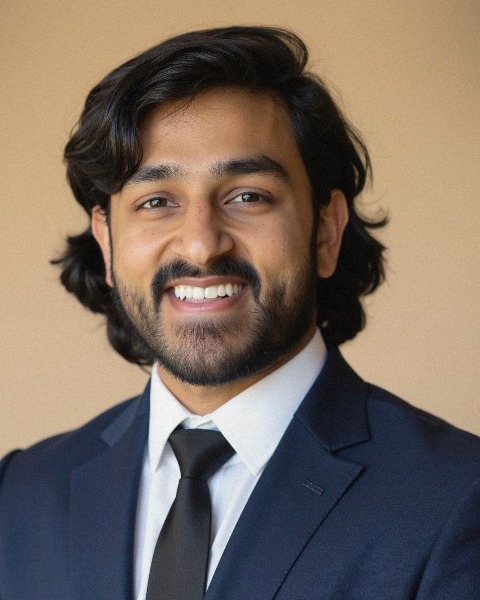Spine
Does Alignment with Roussouly Classification Improve Outcomes in Well-Aligned Adult Spinal Deformity Patients?
Does Alignment with Roussouly Classification Improve Outcomes in Well-aligned Adult Spinal Deformity Patients?

Janesh Karnati, B.A.
Medical Student
University of Cincinnati
University of Cincinnati
Presenting Author(s)
Introduction: Correction of adult spinal deformity according to the Roussouly Classification, Scoliosis Research Society (SRS)-Schwab classification, and the Global Alignment and Proportion (GAP) score has been associated with reduced rates of mechanical complications. However, it remains uncertain whether surgical correction must fulfill the criteria of each individual classification system or if adherence to a single correction strategy is sufficient for optimal outcomes.
Methods: This single-center study enrolled patients with adult spinal deformity undergoing corrective surgery. All participants underwent long-segment fusion to the sacrum with iliac fixation and had baseline and 1-year postoperative radiographic data available. Patients were classified according to their theoretical and actual postoperative Roussouly types. Those whose theoretical and actual Roussouly types were identical were classified as a “Match,” while those with differing types were classified as a “Mismatch.” Patients were considered "well-aligned" if they met the criteria of sagittal vertical axis (SVA) ≤ 5 cm, pelvic incidence-lumbar lordosis (PI-LL) mismatch ≤ 10°, or a GAP score ≤ 6.
Results: A total of 174 "well-aligned" patients (mean age 65.1 years, 63.2% female) were included. At baseline, 59.2% of patients were classified as “Mismatch”. At 1 year post-operatively, 62.6% of patients were classified as “Mismatch”. Among all post-operative patients, Roussouly matched patients were more likely to be discharged to home (aOR 2.3, 95% CI 1.05-5.03, p=0.037) but were more likely to be readmitted within 1 week (aOR 2.15, 95% CI 1.03-4.49, p=0.043) compared to mismatched. Among patients with PI-LL ≤ 10°, Roussouly matched patients were more likely to return to the OR (aOR 18.38, 95% CI 1.96-172.47, p=0.011) and to have wound dehiscence (aOR 25.62, 95% CI 1.26-519.19, p=0.035). No significant differences were observed in the rate of mechanical complications, proximal junctional kyphosis, adjacent segment disease, vertebral fracture, screw loosening, pseudoarthrosis, or rod breakage.
Conclusion : Although Roussouly classification in the setting of ASD can predict certain post-surgical outcomes such as direct discharge to home and hospital readmission, only incremental benefit was observed when combined with Schwab sagittal modifiers or GAP score.
Methods: This single-center study enrolled patients with adult spinal deformity undergoing corrective surgery. All participants underwent long-segment fusion to the sacrum with iliac fixation and had baseline and 1-year postoperative radiographic data available. Patients were classified according to their theoretical and actual postoperative Roussouly types. Those whose theoretical and actual Roussouly types were identical were classified as a “Match,” while those with differing types were classified as a “Mismatch.” Patients were considered "well-aligned" if they met the criteria of sagittal vertical axis (SVA) ≤ 5 cm, pelvic incidence-lumbar lordosis (PI-LL) mismatch ≤ 10°, or a GAP score ≤ 6.
Results: A total of 174 "well-aligned" patients (mean age 65.1 years, 63.2% female) were included. At baseline, 59.2% of patients were classified as “Mismatch”. At 1 year post-operatively, 62.6% of patients were classified as “Mismatch”. Among all post-operative patients, Roussouly matched patients were more likely to be discharged to home (aOR 2.3, 95% CI 1.05-5.03, p=0.037) but were more likely to be readmitted within 1 week (aOR 2.15, 95% CI 1.03-4.49, p=0.043) compared to mismatched. Among patients with PI-LL ≤ 10°, Roussouly matched patients were more likely to return to the OR (aOR 18.38, 95% CI 1.96-172.47, p=0.011) and to have wound dehiscence (aOR 25.62, 95% CI 1.26-519.19, p=0.035). No significant differences were observed in the rate of mechanical complications, proximal junctional kyphosis, adjacent segment disease, vertebral fracture, screw loosening, pseudoarthrosis, or rod breakage.
Conclusion : Although Roussouly classification in the setting of ASD can predict certain post-surgical outcomes such as direct discharge to home and hospital readmission, only incremental benefit was observed when combined with Schwab sagittal modifiers or GAP score.

.jpg)